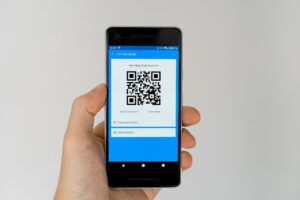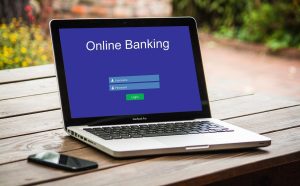How can I create an Internet banking? In the digital age, internet banking has become a necessity rather than a luxury. Whether you want to transfer money, pay bills, or check your account balance, online banking makes it all possible with just a few clicks. If you’re asking “how can I create an internet banking” account, you’re in the right place. This guide will walk you through everything you need to know—from requirements to registration, setup, and safety tips.

How can I Create an Internet Banking?
What Is Internet Banking?
Let’s define what it is. Internet banking, also known as online banking or e-banking, is a digital service provided by banks that allows customers to perform financial transactions over the internet. It offers 24/7 access to your account and eliminates the need to visit a physical bank branch.
Why You Should Use Internet Banking
If you’ve ever waited in line at a bank or struggled with transaction delays, then the benefits of internet banking are clear. Understanding these benefits will help you see why so many are asking how can I create an internet banking account today.
Key Benefits:
Convenience: Access your bank anytime, anywhere.
Speed: Instant transfers and quick transactions.
Security: Encrypted platforms protect your data.
Cost-Efficiency: Avoid unnecessary branch fees.
Record-Keeping: Access to transaction history and digital receipts.
What You Need Before Creating an Internet Banking Account
If you’re asking how can I create an internet banking, you first need to ensure you meet a few basic requirements:
A functional bank account (savings or current)
A valid phone number and email
A smartphone or computer with internet access
Your Bank Verification Number (BVN) (if you’re in Nigeria or similar systems elsewhere)
ATM card (some banks use this to activate online access)
A secure password and, optionally, two-factor authentication

How can I Create an Internet Banking?
Step-by-Step Guide: How Can I Create an Internet Banking?
Now let’s dive into the actual process. If you’re wondering how can I create an internet banking account, follow these steps:
1. Visit Your Bank’s Official Website or App
The first step in answering how can I create an internet banking is to go directly to your bank’s official website or download their mobile app. Never use a third-party link to register.
2. Locate the Internet Banking Section
Most bank websites have a clearly labeled button like “Register for Online Banking” or “New User? Sign Up Here.”
3. Click on Register or Enroll
Clicking this option initiates the process. This is a crucial step in the journey
4. Input Your Account Details
You’ll be prompted to provide:
Account number
Name
Date of birth
ATM card number (for some banks)
BVN
Email and phone number registered with the bank
This data ensures you are the rightful account owner.
5. Verify Your Identity
Some banks will send a One-Time Password (OTP) to your email or mobile number. Enter it to proceed. For those asking how can I create an internet banking with enhanced security, ensure your contact info is updated before starting.
6. Set Your Username and Password
Create a secure username and password. Make sure your password includes:
Uppercase and lowercase letters
Numbers
Special characters (e.g., !@#$%)
Can also read on: Suncrop Login Internet Banking
7. Confirm and Submit
Once all details are entered and verified, click “Submit” or “Finish.” You’ll receive a confirmation email or SMS that your internet banking profile has been created.
How Can I Create an Internet Banking on My Phone?
If you’re mobile-savvy and wondering how can I create an internet banking on your smartphone, the process is nearly the same—just done via the bank’s official mobile app. In many cases, mobile banking apps now offer biometric login, further enhancing security.
Safety Tips for Internet Banking Users
Creating your internet banking profile is only half the job. Follow these important tips:
Never share your password or OTP.
Avoid using public Wi-Fi to access your bank.
Change your password regularly.
Log out after every session.
Enable two-factor authentication.
Keep your app updated to avoid security loopholes.
These practices are essential parts of answering the full question: how can I create an internet banking system and use it responsibly?
Read also: Bank SA Internet banking
Common Problems and Solutions
If you’ve asked how can I create an internet banking and faced issues, here are some typical problems and how to fix them:
Problem: OTP not received.
Solution: Check if your phone number/email is correctly linked to your bank account.Problem: Invalid credentials.
Solution: Ensure you’re entering the right account number and using the same info you gave the bank when opening the account.Problem: Website won’t load.
Solution: Use a secure browser or update the bank’s app.
What Happens After Creating an Internet Banking Profile?
Once your registration is successful, you can:
View your account balance and statement
Transfer money to other accounts
Pay utility bills (electricity, water, etc.)
Buy airtime and data
Apply for loans or investments (depending on the bank)
Download account reports
Which Banks Offer Easy Internet Banking Setup?
Many banks around the world now offer quick and user-friendly internet banking. Some popular banks known for easy setup include:
First Bank
UBA
Access Bank
Chase
Barclays
HSBC
TD Bank
You can check your bank’s FAQ section to explore how their process may differ slightly in answering how can I create an internet banking account with them.
Final Thoughts: How Can I Create an Internet Banking Easily?
To summarize, if you’re wondering how can I create an internet banking, the steps are straightforward, but the security aspects are crucial. Make sure you have all necessary documents, follow the right steps, and stay cautious when transacting online. Internet banking offers unmatched convenience and power, but only when used responsibly.

Leave a Comment